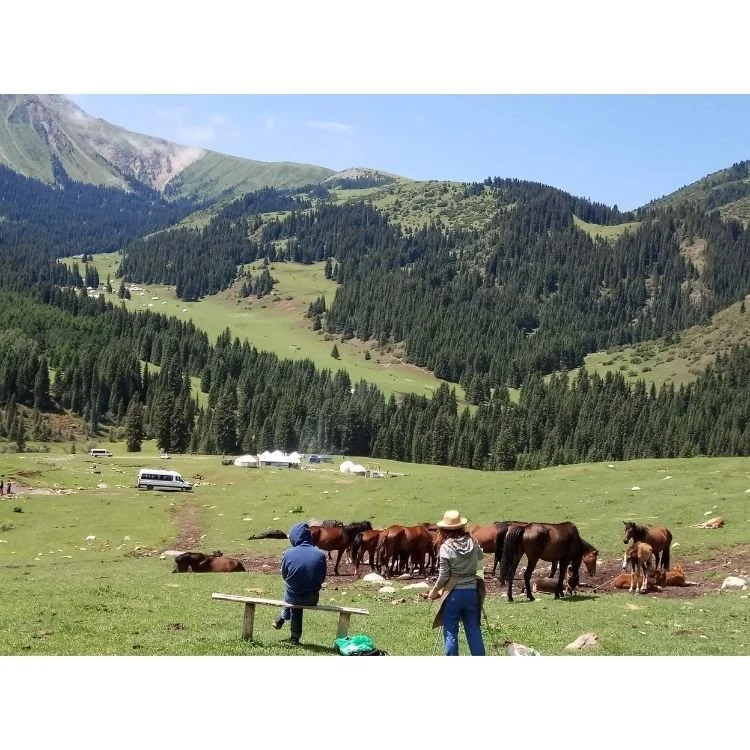Nomadic Art Camp 2018:
Art, Community, and Resilience in a Globalized World
2018 NOMADIC ART CAMP CATALOGUE PDF
The Nomadic Art Camp 2018 served as a critical experiment in expanding the role of art in a world that is increasingly interconnected yet divided by global challenges. With a specific focus on cultivating new avenues for collaboration between international art communities and educational institutions, the camp sought to redefine the parameters of artistic practice in a rapidly changing global landscape. Centered around emerging artists, particularly those still in the formative stages of their careers, the camp offered an unparalleled opportunity to push the boundaries of artistic expression, away from the rigid constraints of traditional methods and towards more experimental, interdisciplinary, and boundary-defying approaches. At its core, the camp was not merely an artistic retreat; it was a radical rethinking of the role of art in a world shaped by environmental degradation, social inequality, and a growing disconnection between humanity and nature. By focusing on the younger generation of artists, the camp aimed to instill a sense of resilience and adaptability, encouraging participants to break free from conventional artistic norms and explore fresh, uncharted territories. This was not just about creating art—it was about experimenting with new modes of thinking, making, and engaging with the world.
The first phase of the camp, led by Professor Liliya Ustyugova and accompanied by students from the Moscow State Academic Institute of Arts, was centered around an immersion experience in the remote landscapes of Kyrgyzstan. With the breathtaking shores of Lake Issyk-Kul and Son-Kul as their backdrop, the artists found themselves distanced from the distractions of urban life, enabling them to engage with both nature and their creative processes on a deeper level. In these rural, almost untouched surroundings, the artists were not only free to experiment with new artistic methods but were also invited to reflect critically on contemporary global crises. From climate change to social inequality, the camp encouraged participants to question the role of art in addressing these urgent issues. For many of the artists, the remote setting acted as a catalyst for their creative evolution. The natural world became not just an inspiration, but an active participant in the artistic process. Artists began to view their work as a form of inquiry—an exploration of how their practice could both reflect and challenge the socio-political and environmental realities they faced. Whether through painting, sculpture, or performance art, the work that emerged was not simply a product of personal expression but a collective endeavor aimed at fostering a deeper awareness of pressing global challenges. The camp embraced art as a tool for social and environmental activism, not just as a passive reflection of the world.
The second phase of the camp brought together a more diverse international group of artists, broadening the scope of the conversation to include multiple perspectives on art, culture, and global crises. With participants hailing from different countries and artistic traditions, this phase of the camp facilitated an enriching cross-cultural exchange, where artists could share ideas and collaborate on projects that transcended national boundaries. The experimental ethos of the camp remained at its heart, encouraging artists to push beyond their traditional practices and reimagine the role of art in an increasingly globalized world. Central to the discussions of this phase was the idea of art as a tool for social change, particularly in relation to environmental sustainability and the preservation of cultural heritage. Artists used the natural materials around them and incorporated local traditions into their works, emphasizing the importance of engaging with the environment in a meaningful, sustainable way. Some experimented with multimedia installations, blending traditional artistic forms with new digital technologies, exploring the intersection of past, present, and future in their work. This fusion of media allowed the artists to address contemporary issues through a more nuanced lens, offering new possibilities for the future of art.
What made the Nomadic Art Camp 2018 unique was not just its focus on innovation, but its commitment to fostering a deeper connection between art and the world around it. The rural setting provided a space for the artists to step away from the pressures of city life and engage with the land and culture in an authentic and organic way. Here, the creative process was not rushed; it was slow, deliberate, and introspective, allowing the artists to focus on the journey of creation itself.
This environment encouraged artists to rethink the very purpose of their work. In this space, art was not simply a mirror to reflect the world but a lens through which to engage with, critique, and ultimately reshape it. The works produced at the camp offered fresh perspectives on the role of art in a world grappling with urgent ecological and social challenges. By stepping outside of conventional artistic frameworks and embracing a more interdisciplinary, experimental approach, the artists explored how their work could serve as both a form of resistance and resilience, while also functioning as a catalyst for personal and societal transformation. Through fostering collaboration, encouraging experimentation, and positioning art within the context of global challenges, the camp allowed the artists to redefine their role in driving social change and addressing pressing contemporary issues.
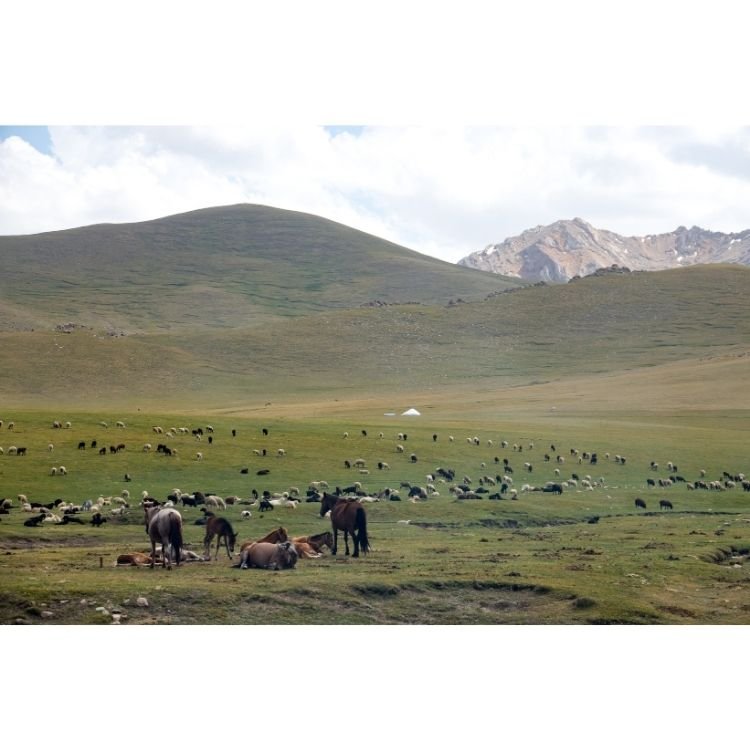
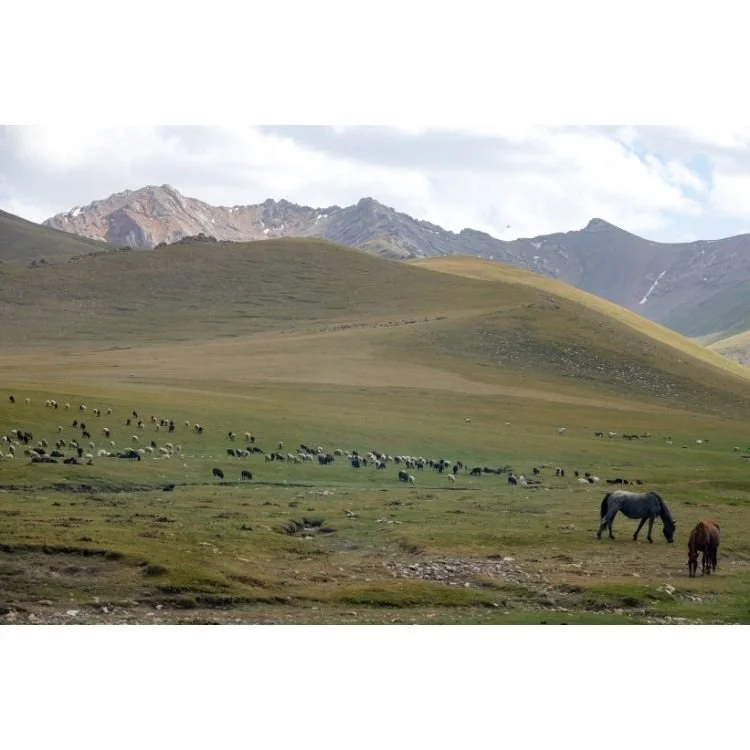
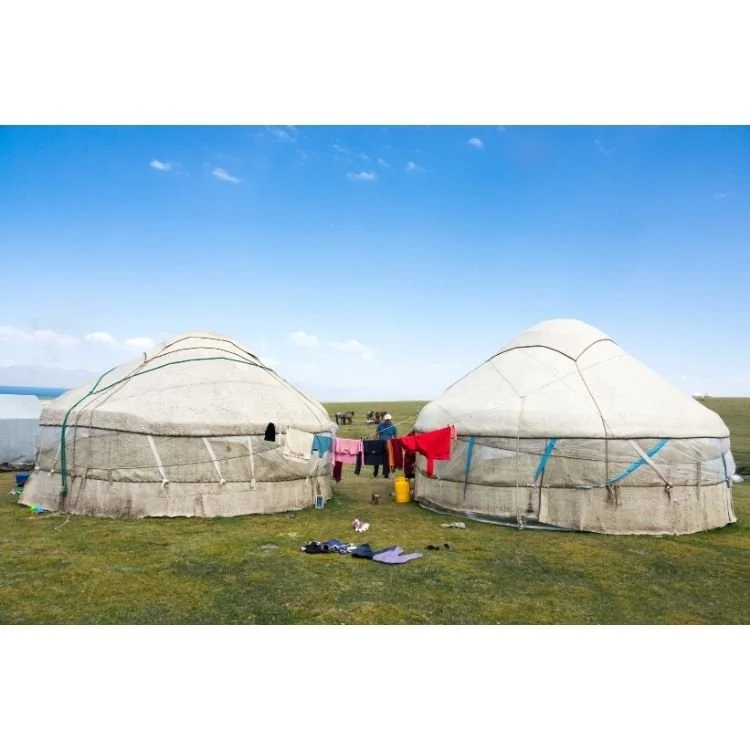









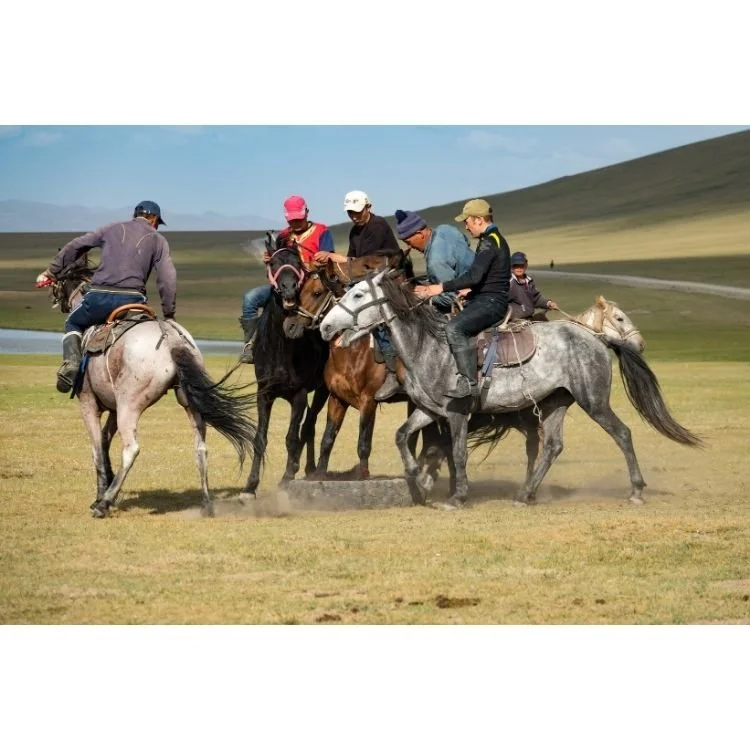

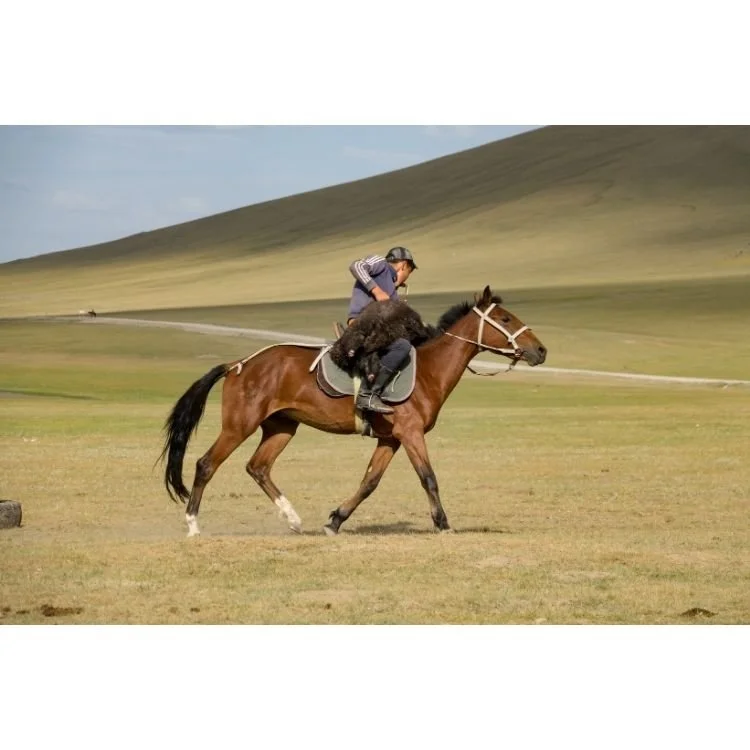
Participants in the art exhibition at the Art Gallery Oak Park in Bishkek:
Liliya Ustyugova (RU), Elena Matishina (RU), Olga Arialar (RU), Maria Naumova (RU), Lali Molyakova (RU), Nadejda Kalinina (RU), Elena Flerko (RU), Olga Glushkova (RU), Anastasia Kulachenko (RU).
Curator: Shaarbek Amankul
Participants of the Nomadic Art Camp at Son-Kul and Issyk-Kul Lake:
A group of academics, educators, and students from the University of Augsburg, Germany.
Participants of the Nomadic Art Camp at Son-Kul and Issyk-Kul Lake: Liliya Ustyugova (RU), Elena Matishina (RU), Olga Arialar (RU), Maria Naumova (RU), Lali Molyakova (RU), Nadejda Kalinina (RU), Elena Flerko (RU), Olga Glushkova (RU), Anastasia Kulachenko (RU), Angelika Walther (DE), Nico Walther (DE), Beda Foehn (CH), Malcolm Swith (AU), Ilyas Umetaliev (KG).
